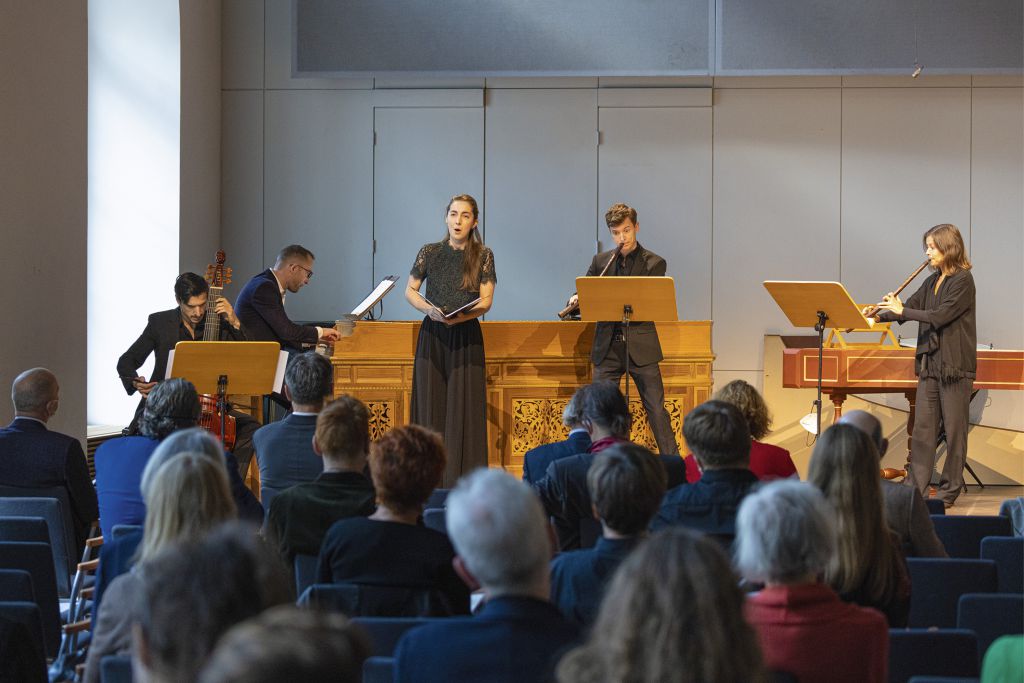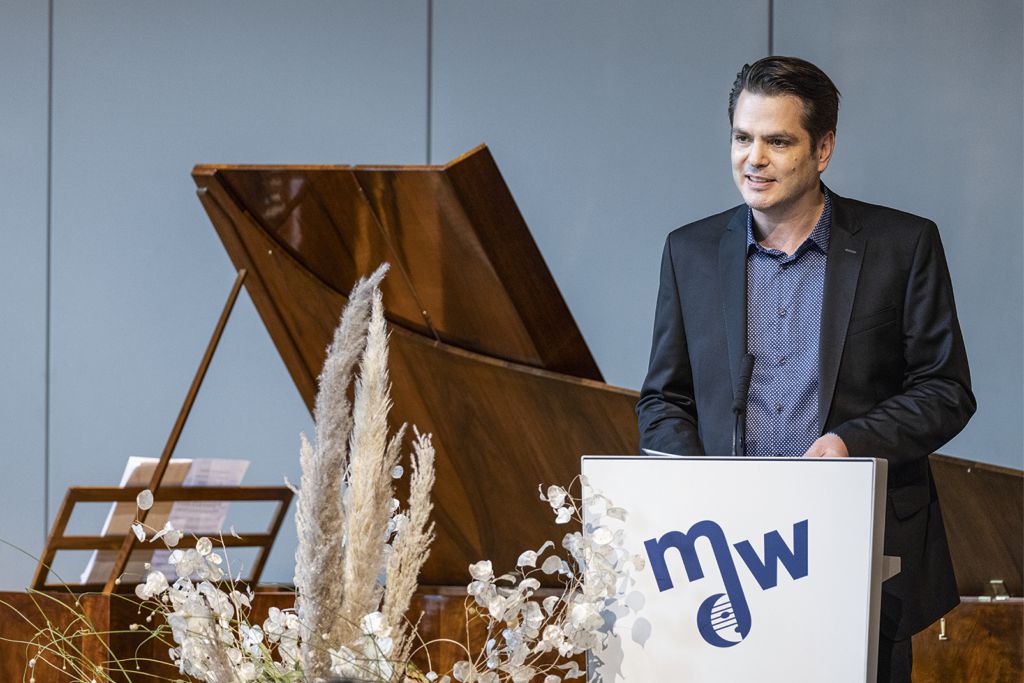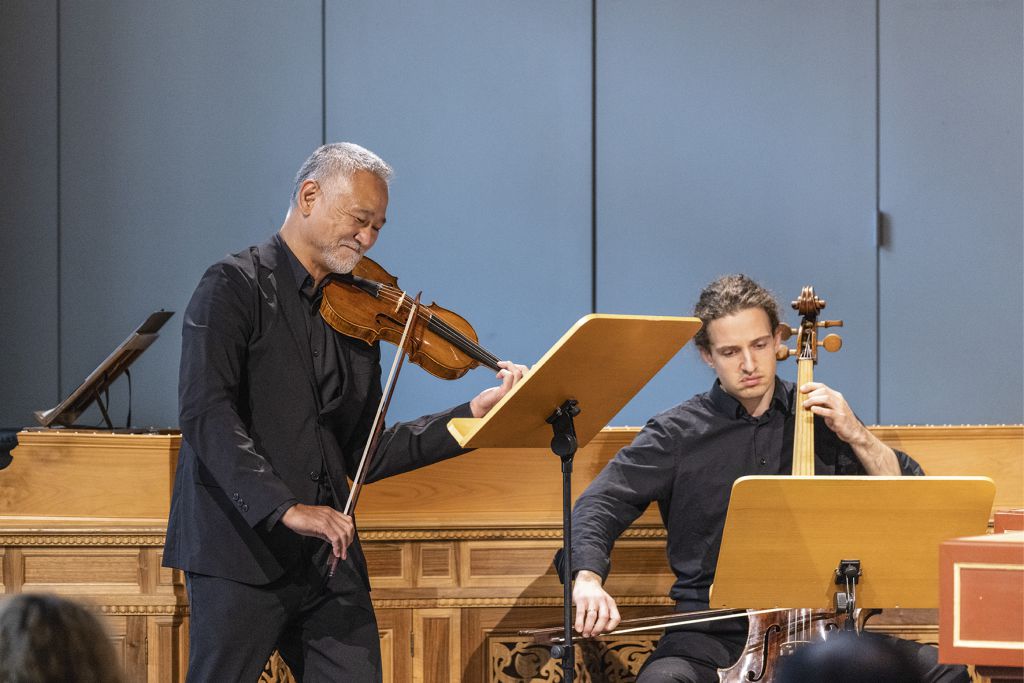Das im Herbst 2020 an der mdw neu gegründete Institut für Alte Musik kann nun schon auf ein einjähriges Bestehen zurückblicken, und endlich konnte die Institutsgründung auch offiziell gefeiert werden.
Mit dem breit gefächerten musikalischen Programm des Eröffnungskonzerts spiegelte das Institut seine Schwerpunkte wider: die Musik am Wiener Kaiserhof des 17. und frühen 18. Jahrhunderts, den sogenannten Wiener Barock, wie auch die Beschäftigung mit der Wiener Klassik und darüber hinaus Musik auf Originalinstrumenten unter Berücksichtigung der historischen Aufführungspraxis. Die gewählten Werke ließen das Schaffen einzelner mit dem Wiener Kaiserhof in Verbindung stehender Komponisten aufblitzen.

Ludwig Senfl hielt bereits als Kind Einzug in die Hofkapelle Kaiser Maximilians I. und wurde in den Verzeichnissen der Kapelle als Altist registriert. Ferdinand Tobias Richter wurde 1679 ein kaiserliches Stipendium für ein Studium in Rom zuteil. Vier Jahre später trat er seinen Dienst als kaiserlicher Hoforganist an und unterrichtete auch mehrere Mitglieder der kaiserlichen Familie. Damit wurde er der Nachfolger von Alessandro Poglietti, der ab 1661 das Amt des Hoforganisten unter Leopold I. versehen hatte, aber während der Zweiten Wiener Türkenbelagerung 1683 ein tragisches Ende erleiden musste. Johann Joseph Fux, dessen Lehrwerk Gradus ad Parnassum noch heute die Grundlage für den Kontrapunktunterricht bildet, wurde 1698 zum Hofcompositeur ernannt und war ab 1715 Kapellmeister der kaiserlichen Hofkapelle. Auch bei Franz Schubert lässt sich eine Verbindung zum Kaiserhof finden: Im Alter von elf Jahren wurde er wegen seiner schönen Stimme als Sängerknabe in die Hofmusikkapelle aufgenommen. Unter den aufgeführten Werken befindet sich auch eine Kantate aus anonymer Hand, die für den Wiener Ursulinenkonvent geschrieben wurde, der ehemals in dem jetzigen Gebäude der mdw in der Seilerstätte 26 untergebracht war. Die aus Italien stammende Kaiserin Eleonora II. setzte sich für die Gründung des Konvents in Wien ein und war wohl auch für den regen Austausch der Ursulinen mit italienischen Musikern zuständig. Unter den Ursulinen gab es viele gute Sängerinnen und Musikerinnen, deren künstlerische Aufführungen in Sankt Ursula von einem Zeitgenossen 1685 als „rar und angenehm“1 gepriesen wurden. An zwei Festtagen im Jahr erhielten die Ursulinen kaiserlichen Besuch: am Tag der heiligen Ursula und am Karsamstag. Zum Anlass dieses Sabato santo wurde die im Festakt erstmalig wieder aufgeführte Cantata sacra komponiert. Damit setzte das Institut für Alte Musik auch ein Zeichen, dass es sich der Erforschung und Publikation bisher unentdeckter Schätze des Wiener Musiklebens widmen wird.

Eine dem Originalklang möglichst nahekommende Aufführungspraxis erfordert naturgemäß das entsprechende Instrumentarium, und das Institut für Alte Musik setzt sich sehr dafür ein, den Studierenden diese Ressourcen so weit als möglich zur Verfügung zu stellen. Ein Consort aus Renaissance-Traversflöten, eine Kopie des einzig erhaltenen Originals in Verona, erweckte die Musik von Ludwig Senfl zu neuem Leben. Ein italienisches Cembalo nach dem Original von Carlo Grimaldi, ein Claviorganum2, das die Register von Cembalo, Orgel und Regal vereint, sowie ein Wiener Fortepiano nach einem Original von Rosenberger repräsentierten nur einen kleinen Ausschnitt aus einer reichen Palette von verschiedenartigen historischen Tasteninstrumenten. Beim Festkonzert erklangen auch die für die festlichen Werke des Wiener Barock typischen Zinken, von denen noch Originale im Wiener Kunsthistorischen Museum erhalten sind.
Es musizierten gemeinsam Lehrende, Studierende und Gäste des Instituts für Alte Musik, dessen Lehrangebot nun schon ein reiches Spektrum umfasst. So wird neben den Studienrichtungen Cembalo, Blockflöte und Historische Aufführungspraxis auch im Rahmen von Kammermusik, Schwerpunkten und Workshops Unterricht in Barockgesang, Traversflöte, Barockoboe, historischen Klarinetteninstrumenten, Barockfagott, historischer Posaune, Naturtrompete, Hammerklavier, Clavichord, Barockvioline, Barockcello, Viola da Gamba, Laute, Barockgitarre und Barocktanz angeboten.

Die Beschäftigung mit Alter Musik kann ja in Wien schon auf eine Zeit zurückblicken, die von uns jetzt selbst in die Periode Alter Musik eingereiht wird. Gottfried van Swieten, Sohn des Leibarztes von Kaiserin Maria Theresia, Diplomat im Dienste der Habsburger und am Ende seiner Karriere Präfekt der kaiserlichen Hofbibliothek, sammelte begeistert Manuskripte einer bereits vergangenen Epoche und ließ im Rahmen von Sonntagskonzerten die Musik von Johann Sebastian Bach und Georg Friedrich Händel im Prunksaal der Wiener Hofbibliothek aufführen. Wolfgang Amadé Mozart wirkte selbst bei diesen Konzerten mit und wurde auf diese Weise mit den alten Meistern bekannt. Damals galt das Hauptinteresse allerdings den Kompositionen an sich; an der Aufführungspraxis war man noch nicht interessiert, im Gegenteil: Mozart hat die barocken Werke bearbeitet und ‚uminstrumentiert‘, um sie in das Klanggewand seiner Zeit zu kleiden. Erst in den späten 1940er Jahren wurden an der damaligen Akademie für Musik und darstellende Kunst die Erforschung der historischen Aufführungspraxis und die Beschäftigung mit historischen Instrumenten in gewissem Maße ins Lehrangebot aufgenommen. Persönlichkeiten wie Josef Mertin und Isolde Ahlgrimm prägten diese Anfänge des steigenden Interesses an stilgerechter Aufführung. Mit der im Herbst 2020 erfolgten Gründung eines eigenen Instituts für Alte Musik, das diese Belange möglichst breit – praktisch wie auch wissenschaftlich – abdeckt, ist sicher ein Meilenstein an der mdw gesetzt worden.

